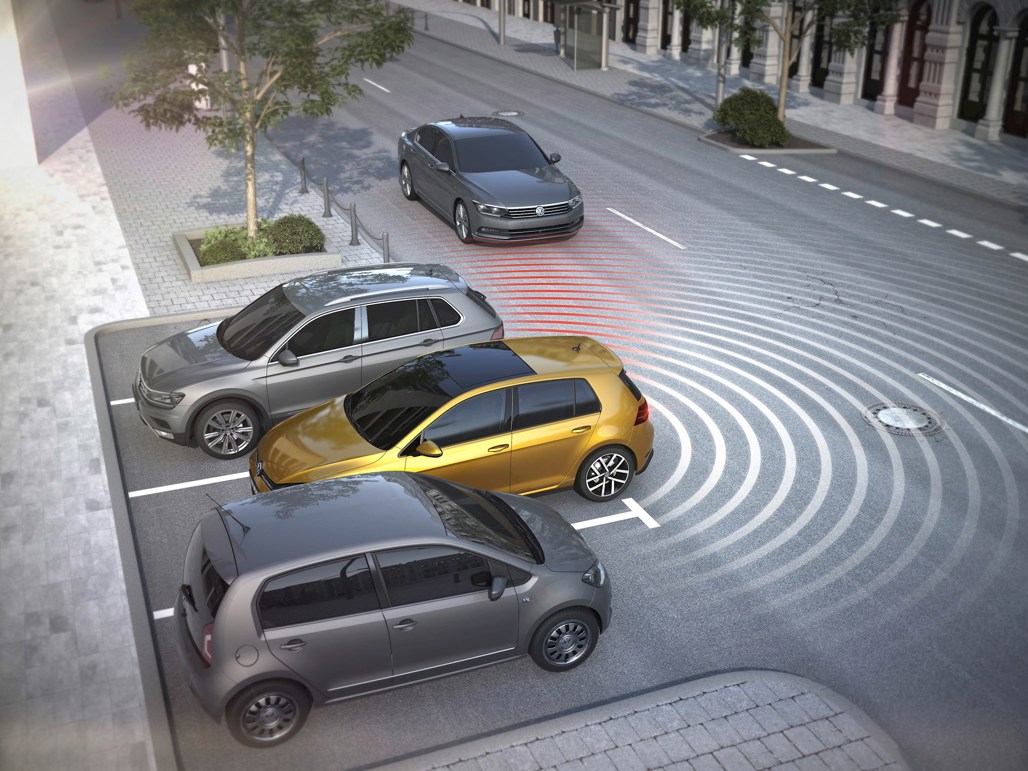Cars are now loaded with new technologies such as lane departure warning, blind spot monitoring and collision avoidance.
These safety features are called Advanced Driver Assist Systems (ADAS). Here are 10 ADAS functions that are fast becoming commonplace in new vehicles.
Blind Spot Monitoring (BSM)
Senses any vehicle that may be in the driver’s blind spot to the rear or side of the vehicle.
The warning is normally a visible alert in the form of a light in the side mirrors.
Rear Cross Traffic Alert (RCTA)
Works in conjunction with the Blind Spot Monitoring system. It warns the driver of approaching cross-traffic when reversing out of a parking place. The warning can be audible and/or visible.
Park Assist
Activating this system engages a group of sensors that help the driver to see if a space is large enough to park in. In most cases it can control the steering and the driver controls the accelerator and brakes, although some systems have the ability to control everything. Visible and audible warnings alert the driver to the proximity of other vehicles.
Intelligent Headlamp Control (IHC)
This uses cameras, steering angle sensors, yaw-detectors and infrared LEDs to adapt the illumination range of a vehicle by constantly monitoring its driving mode and traffic situation. Different manufacturer systems include:
- Automatic headlamp beam adjustment to give varying light spreads suited to rural, urban or motorway driving.
- Progressive, instead of instant, headlamp beam change between main and dip, to minimise driver eye-strain.
- Automatic adjustment of headlamp beam direction and shape to anticipate curving roads, or road junction turns.
- Detection by IR beams of obstacles beyond the headlamp beam, which are then shown in the driver’s display.
Autonomous Emergency Braking (AEB)
If this clever collision avoidance technology senses that the vehicle is likely to impact an object and the driver has not taken any braking action, the system will issue an audible and/or visual alarm. If the driver still does not take action and a collision is imminent, it will apply the brakes automatically.
Forward Collision Warning (FCW)
Similar to the AEB system above but it issues a warning only, and will not apply any automatic braking.
Lane Departure Warning (LDW)
Monitors the vehicle’s position within its lane, and provides a warning if the vehicle starts to move out of its lane without any driver input. This warning can be visible, audible or a vibration that is felt through the steering wheel or seat, or any combination of all three.
Lane Keep Assist (LKA)
Similar to (LDW), but in addition to giving a warning it will apply corrective steering/braking to keep the vehicle in its lane.
Adaptive Cruise Control (ACC)
The driver sets the desired speed and distance to be maintained between the vehicle and the one in front. The system then monitors and maintains the distance by regulating the throttle and if necessary, applying the brakes. It will resume the pre-set speed once any detected risk has gone.
Traffic Sign Recognition (TSR)
This uses a camera which can read and display speed limit signs and “no overtaking” warnings so that the driver is made aware of the command, even if they’ve failed to notice a road sign. The system is informative only and does not take corrective action to reduce the speed of the vehicle. Where a speed limit is dependent on weather conditions, the rain or light sensor will provide input, which the system can recognise to display the correct speed limit.
The above functions all help to improve vehicle safety, but it’s paramount that the driver still maintains full control and stays alert to the surroundings at all times.
You shouldn’t rely on these systems alone to protect you from any incident on the road.




